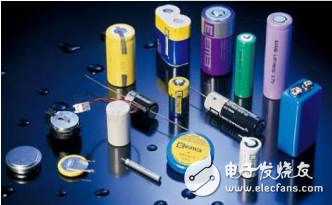After entering the 21st century, electronic information technology has become the most important technology, and electronic components are the premise of the development of electronic information technology. In order to promote the further development of electronic information technology, it is necessary to improve the reliability of electronic components, so it is necessary to understand the mechanism, mode and analysis technology of electronic component failure.

1. The meaning of failure
Failure refers to the failure of electronic components [1]. The important components of various electronic systems or electronic circuits are generally different types of components. When it requires more components, it indicates that the complexity of the equipment is higher; otherwise, it is low. A circuit fault is also generally defined as the loss of the specified function of the circuit system.
2. Classification of failure
According to different standards, the classification of failures generally has the following classification methods [2].
The reason for failure is the standard: it is mainly divided into essential failure, misuse failure, accidental failure, natural failure and so on.
The degree of failure is the standard: it is mainly divided into partial failure and complete failure.
The failure mode is taken as the standard: it is mainly divided into no function, short circuit, open circuit, and the like.
Based on the severity of the consequences of failure: mainly divided into mild failure, serious failure and fatal failure.
In addition to the above, there are a variety of classification criteria, such as failure scenarios, failure external performance as standards, etc., not to be repeated here.
3. Mechanism of failure
The mechanism of failure of electronic components also has different classifications, which are usually classified according to the causes, and can be mainly divided into the following failure mechanisms.
1 Surface degradation: The sodium ion of the component is contaminated and then the channel is leaky, γ radiation is damaged, surface creep or breakdown; 2 Deterioration caused by design problems: refers to the circuit, layout and structure of the single sub-component Design problem; 3 internal degradation: refers to the instantaneous power overload caused by CMOS latch-up effect, secondary breakdown, heavy metal contamination, neutron radiation damage and material problems, structural performance degradation, etc.; 4 damage caused by improper use: Electrical surge damage, electrostatic damage, damage caused by excessive temperature, faults caused by interference signals, etc. 5 Metallization system degradation: refers to aluminum electromigration, aluminum corrosion, aluminum gap, etc. in electronic components; 6 package degradation: It refers to the corrosion or leakage of the pipe leg or the presence of foreign objects in the casing, resulting in short circuit or leakage [3].
4. Common methods for failure analysis
There are many techniques for failure analysis of electronic components, but the following are commonly used, as described below.
4.1 Pull out the insertion method. The pull-out method refers to monitoring the process of unplugging and inserting the component board or the plug-in board. Based on this, it is judged whether the plug-in interface is the place where the fault occurs. It is worth noting that during the failure analysis using the pull-out insertion method, there is a special situation in the process of unplugging and inserting the component board or the plug-in board, that is, the place where the state changes sometimes is not only the connection interface, but also may be Other parts. Therefore, when applying the insertion method, it is necessary to observe each part and subtle changes in order to make a correct judgment.
4.2 Sensory discrimination. The sensory discrimination method is a method of judging whether or not there is an abnormality by the shape of the eye component, the temperature of the hand touch sensing component, the degree of softness and hardness, the taste of the nose, and the sound of the ear. Sensory discrimination is easy to operate and saves money, but the content that can be discerned is subject to sensory abilities.
4.3 Power supply deflection method. The power pull method refers to pulling the normal power supply and voltage to be in an abnormal state, and then exposing weak links or faults, thereby reflecting the faulty or faulty components and component parts. This method is generally used in the case of a fault due to a long working time or a preliminary judgment that is caused by a grid fluctuation. It is worth reminding that the power supply deflection method is destructive. Before using this method, you must check the insurance factor or other factors, and remember not to use it casually.
4.4 Replace the spare parts method. By monitoring the components or components that have been removed from doubt, and then replacing the qualified spare parts, then compare and analyze the fault phenomenon, such as whether the fault phenomenon disappears, and finally determine whether the fault source is in In the removed parts, this method is replaced by the spare part method.
The above describes several methods for the high frequency of failure analysis of electronic components. In addition, there are static and dynamic measurement methods; raising and lowering temperature methods; and pinning positioning methods.
5. Failure analysis ideas
In order to effectively perform failure analysis on electronic components, a clear idea must be formed. Generally, the failure analysis of electronic components is mainly carried out according to the following ideas: 1 to determine whether it is failure; 2 to determine the ultimate purpose of failure analysis; 3 to start from the failure phenomenon, list all the doubtful points of the failure position; 4 to formulate a solution to the suspected point Step-by-step analysis of the failure location; 5 envisage and enumerate all the causes of the failure site phenomenon; 6 use the experimental test assumptions; 7 propose a preventive failure plan and review it; 8 use facts to test whether the failure prevention plan is effective; 9 Really implement the program to prevent failure [4].
6. Principles of failure analysis
The failure analysis of electronic components should follow the relevant principles. Some commonly used principles are as follows.
6.1 First and second major principles. Generally, the main secondary is judged by the degree to which the fault affects the function. After clarifying the major secondary issues, first resolve the primary issues and then resolve the secondary issues.
6.2 Principles of post-program operation. In the failure analysis, the analyst must first calm down, think of the solution in the brain and then operate, do not blindly operate, and then cause other larger components to fail.
6.3 First general after the special principle. Check the location where the failure often occurs, and then check the location where there is less failure.
6.4 The principle of strong electricity after weakening first. Generally, in the case of a faulty whole machine or a failed sample, when the performance is tested or the fault location is judged, the input signal, power supply, etc., are weak to strong depending on the specific situation. It is worth reminding that in the whole change from weak to strong, we must closely observe and record the abnormal phenomenon. In addition, it is necessary to prevent sudden power-on and shutdown caused by over-power, causing power shock, and finally disturbing the failure state, and then increasing the difficulty of failure analysis [5].
In addition, there are the following principles: simple and complex, first power-on after security, first macro-micro, first peripheral, host, static, dynamic, first power-off, and common.
7. Summary Through the related research on the failure analysis technology of electronic components, we can understand the causes of failure of electronic components, failure modes, failure mechanisms and some commonly used analysis methods. Electronic components are the source of electronic products. In order for electronic devices or electronic systems to operate normally and reliably, the reliability of electronic components must be ensured. Therefore, it is necessary to master the technology of failure analysis of electronic components.
Automotive Toggle Switches
Automotive Toggle Switches, namely Electrical Toggle Switches. Our Automotive Switches could divided into Push Button Switches, Automotive Toggle Switches, Automotive Rocker Switches, Automotive Rotary Switches and Automotive Battery Switches .

Yeswitch has been designing and manufacturing Momentary Toggle Switches for nearly 30 years and has accumulated rich experience in this field. Yueswitch people continue to innovate and constantly overcome technical problems, providing professional automotive control panel toggle switches for global automakers and enthusiasts in the global automotive modification industry. The types of our toggle switch products are complete and diversified to meet the needs of customers.

Yeswitch Waterproof Toggle Switches is widely used in the automotive field, ship, medical, communication, and has IP6 standard. Our company's full range of toggle switches not only have reliable quality assurance, but also can be diversified in appearance. Different types of crank handles can be selected with LED light design, which is convenient for setting and preventing desperation.
Automotive Toggle Switches,Automotive Toggle Switch,Electrical Toggle Switches,Toggle Switch Function
YESWITCH ELECTRONICS CO., LTD. , https://www.yeswitches.com
![<?echo $_SERVER['SERVER_NAME'];?>](/template/twentyseventeen/skin/images/header.jpg)